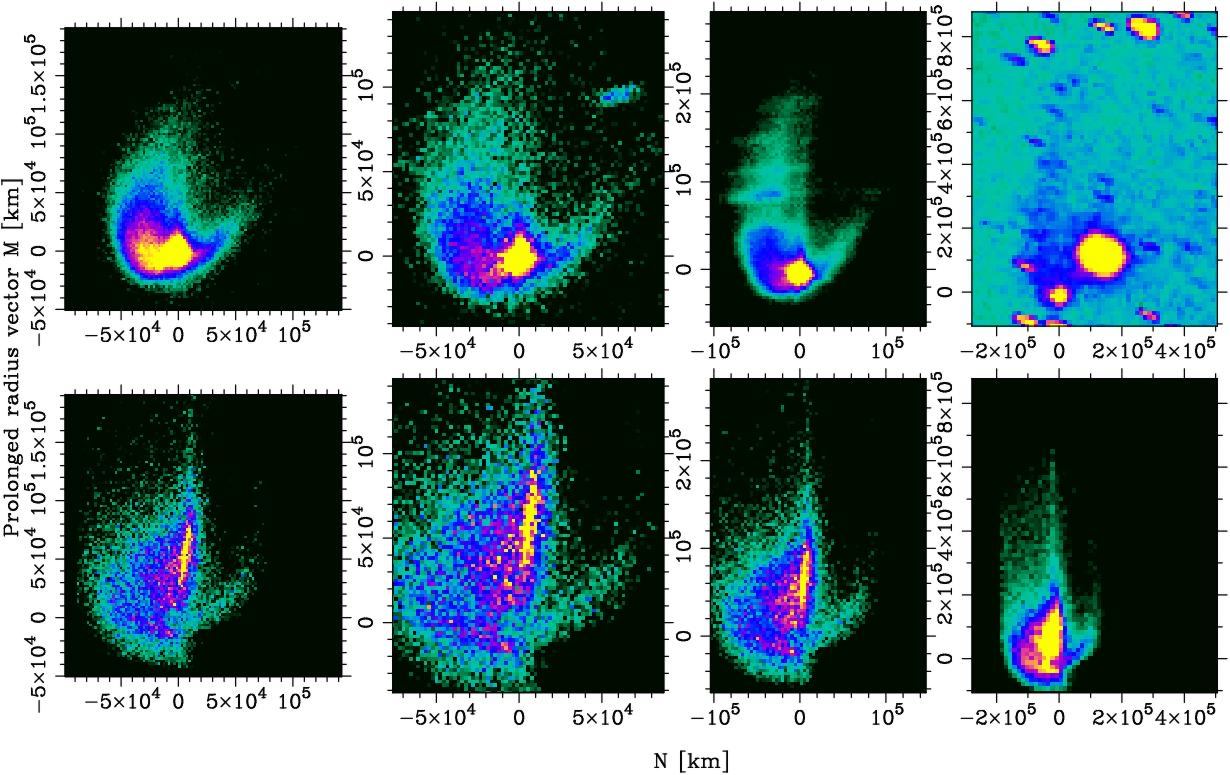[/caption]
On December 12, 2010, something very unusual happened to asteroid Scheila. For a short period of time, its appearance changed dramatically and it even developed a comet-like tail. Now a group of international scientists headed by Fernando Moreno of the Instituto de Astrofísica de Andalucía in Granada, Spain have created a computer model which may explain this weird activity… an impact.
In results revealed October 7th in Nantes, France at the joint meeting of the European Planetary Science Congress and the American Astronomical Society’s Division for Planetary Sciences, the team explained their theory of how this innocent asteroid may have been crashed into by a smaller object. Moreno and his team plotted the brightness curve of Scheila’s newly developed “tail” – watching how it declined over a period of weeks. Their conclusion was that Scheila was either responsible for bumping into an uncatalogued object – or the object bumped into it causing a debris trail.
“The model we used involves a very large number of particles ejected from Scheila.” explains Moreno. “We took into account gravity from the Sun, pressure radiation on the ejected particles, and Scheila´s gravity, which has a strong effect on the particles in its vicinity owing to its large mass.”
Just when did this crash occur? The first indications placed the “asteroid accident” at a period of somewhere between November 11 and December 3, 2010. But, thanks to refined studies the team has placed the smash-up to on – or within – three days of November 27, 2010. With a size of about 110 kilometers across, Scheila isn’t very large and the impactor was estimated to be anywhere from 60 to 180 meters in diameter. That’s quite enough to send visible pieces flying into space!
“We applied a scaling law that uses impact velocity to indicate the mass of the impactor and ejected material.” concludes Moreno. “We know the impact should be about 5 kilometres per second because that’s the average velocity of asteroids in the Main Belt. Using this number we predicted both the ejection velocity of the particles (50 to 80 meters per second) and the size of the impactor.”
As for asteroid Scheila, she’s also a step off the beaten path, too. It belongs to a class known Main-Belt Comets – objects which have orbital characteristics of Main-Belt Asteroids – but sometimes behave like a comet. The reason why they have outbursts still isn’t clear. While these new modeling techniques may lend credence to the impact theory, there’s also a strong possibility of gaseous emissions. However, astronomers from the University of Maryland and Institute for Astronomy, University of Hawaii have ruled out venting in Scheila’s case.
Original Story Source: EuroPlanet News.


Any evidence of solar/CME activity prior to this event? Did the STEREO *.sats record anything ‘incoming’ for this event?
There WERE some very large disturbances on Sol in the week(s) prior to this event:
http://stereo.gsfc.nasa.gov/
http://ssd.jpl.nasa.gov/sbdb.cgi?sstr=596;orb=1;cov=0;log=0;cad=0#orb
Yo Tammy, at the fourth paragraph, there’s a typo in the second line: “2001” should be 2010.
LOL! I Googled “Pointing out someone else’s typo’s” and found this page: http://www.bloggingtips.com/2010/05/28/dealing-with-rude-comments/
The bottom line is:
“It’s easier to point out someone else’s fault than it is to look at your own.”
I don’t recall ever making a “rude comment” to Tammy or any other editor on Universe Today about typographical/grammatical errors, nor have I ever attacked the content of an article.
I would suggest that you read this.
Dear “Terminator of typographical/grammatical errors.”
As a respected and long time denizen of these pages, perhaps you have underestimated the effects your comments might have? Surely you realize that creative individuals, such as yourself, are more sensitive than most? I assume that is back of your efforts at perfection…?
I am constantly reminding my employer: “If I were perfect… My wages would be infinite!” Which seldom warrants the slightest grin…